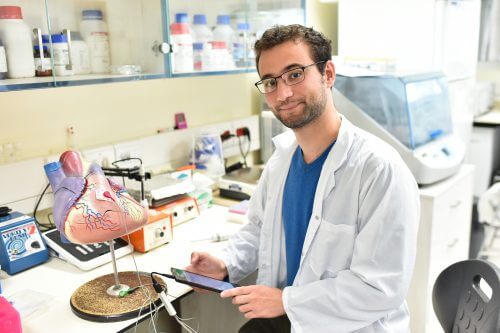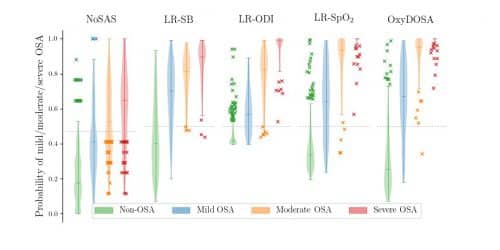Obstructive sleep apnea manifests itself in breathing pauses that last ten seconds or more during the night and lower the oxygen level in the blood. They lead to fatigue during the day, which may lead to impaired work efficiency and worse, to car accidents. Furthermore, obstructive sleep apnea increases the likelihood of developing diabetes, cardiovascular disease

Researchers at the Technion, in the United Kingdom, in the United States and in Brazil, have developed an innovative technology for monitoring OSA - obstructive sleep apnea. The prevalence of this syndrome increases with age and it affects more than 20% of the general adult population, especially overweight men.
Obstructive sleep apnea manifests itself in breathing pauses that last ten seconds or more during the night and lower the oxygen level in the blood. They lead to fatigue during the day, which may lead to impaired work efficiency and worse, to car accidents. Furthermore, obstructive sleep apnea increases the likelihood of developing diabetes, cardiovascular disease.
The research was led by Dr. Joachim Behar, a faculty member in the Faculty of Biomedical Engineering at the Technion, and the findings were published in EClinicalMedicine from the Lancet group. According to him, "obstructive sleep apnea has effective treatments, but many of those who suffer from it are not diagnosed. The technology used to diagnose the syndrome in sleep laboratories is called polysomnography. It is effective in the aforementioned diagnosis, but due to its high cost it is not available to the general public. Obstructive sleep apnea diagnosis is now also done using home monitoring equipment, but this equipment is also not cheap and accessible to the entire population at risk. Cheaper diagnostic methods, based on questionnaires and the analysis of the morphology of the upper respiratory tract, are not accurate enough.
The technology developed under the leadership of Dr. Behar is based on information from 887 subjects from the general adult population in São Paulo, Brazil. The system developed by the research group received this data and was able to distinguish, using artificial intelligence, between subjects suffering from the disorder and the rest. The diagnosis is made on the basis of a combination of biological markers, obtained from the subjects' oxygen saturation while sleeping, demographic information (age, etc.) and anthropometric information such as neck measurements. The system was able to successfully identify all the significant clinical cases of medium or high severity. Common questionnaires in the field of diagnosing sleep problems missed over 15% of serious cases. Using blood oxygen levels alone, however, identified all cases of high severity but failed to identify several cases of moderate severity.

According to Dr. Behar, "this means that the model we developed is a reliable and effective tool for identifying obstructive sleep apnea in large populations. In the future, with the development of a suitable mobile app, the model will allow anyone with a smart watch or smart bracelet that includes an oximeter to perform an accurate self-test of obstructive sleep apnea."
Dr. Joachim Behar completed a master's degree in engineering at the Ecole des Mines de Saint-Étienne in France and a PhD in biological signal processing and computational learning at the University of Oxford in the UK. He twice won the MIT-Physionet prize - a competition in biological signal processing in the cardiology context. After completing his doctorate, he immigrated to Israel and did a post-doctorate under the guidance of Prof. Yael Yaniv from the Faculty of Biomedical Engineering at the Technion. He is currently the head of the laboratory for artificial intelligence in medicine at the faculty. The laboratory focuses on artificial intelligence in medicine in the context of continuously monitored information through mobile and wearable devices.

One response
This seems to be a very interesting breakthrough. Are there works that talk about therapeutic intervention? or causes?